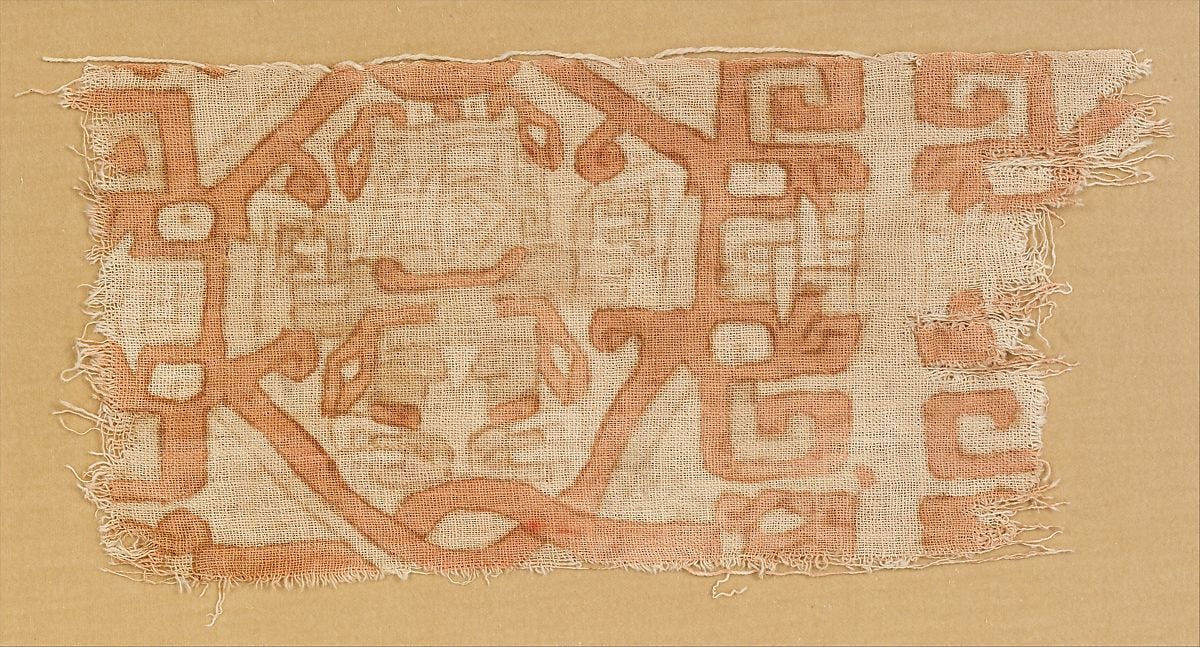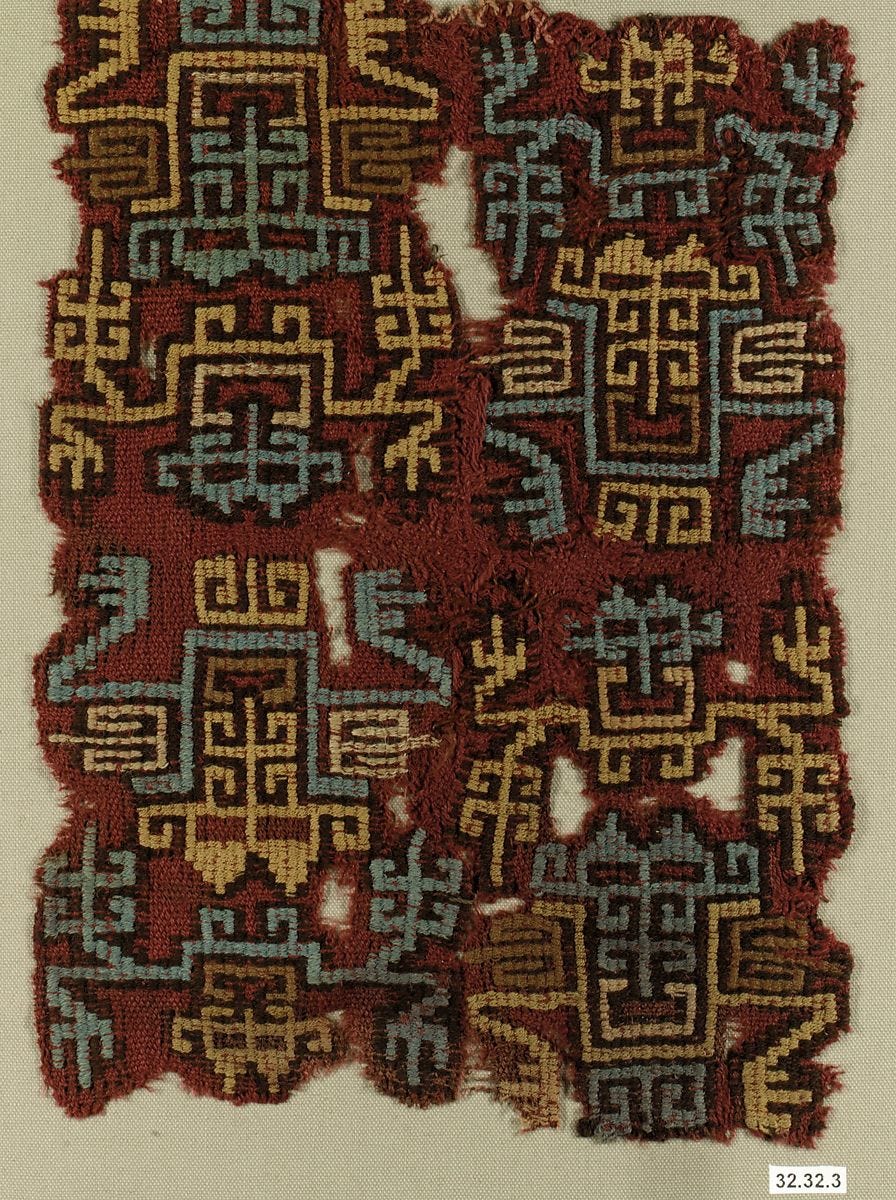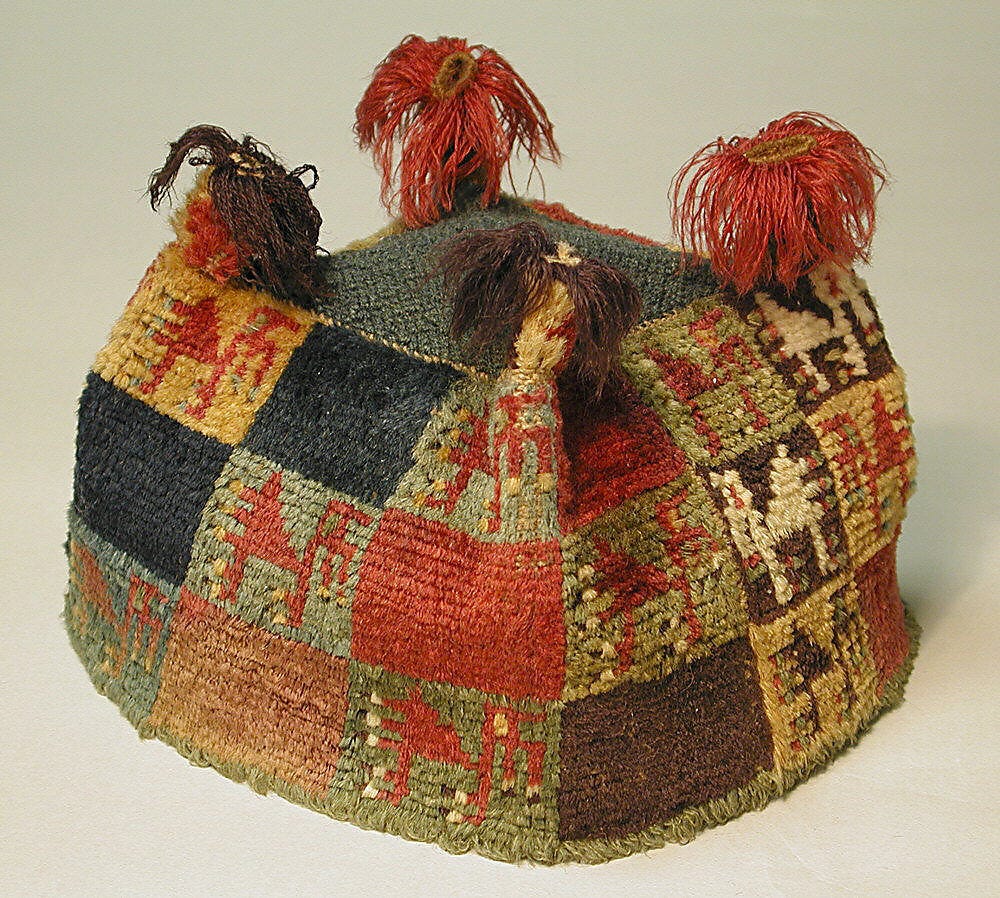The first issues of Pensar la moda aim to help us think and rethink the varied expressions of Latinx fashion in order to strengthen the fashion systems of Abya Yala. In the past issue I started to redefine fashion through a very particular expression of dress in the colonial period: the faldellín. Today I bring some initial referents that may help us identify some of the aesthetic expressions native to Latin America, well beyond the tropical auto-exotization allowed by the global spread of the so-called “Caribbean chic” style.1
To fulfil my mission, I turn (almost inevitably) to history.
Textiles and cloth in Abya Yala are far from new: in the Andes, there are remnants of woven baskets that date more than 10,000 years. By 3,000 BCE, hand-knit textiles were already being created in the region, and between 1,800 y el 800 BCE looms replaced most finger-knitting techniques.
Contrary to many other regions of the world, textiles preceded ceramics in the Andes and they have been so important throughout history, that scholars have identified the “textile primacy” as one of the most important aspects of culture in the region. This textile primacy is evidenced not only in the antiquity of textile arts, but also in how textile design has influenced other artistic media such as ceramics, jewelry, painting, and sculpture over time.

Andean textiles also reflected some of the most important cosmological elements of the cultures that created them. Case in point are the complex patters that showcase “contour rivalry” in Chavín textiles.2 These patterns are made of rotating, reflecting, and transposing motifs that create several figures at a time and offer multiple readings. The strict interdependence and interconnection of motifs in these patterns reflects the principle of reciprocity that allowed Andean cultures to survive in all the environmental spectrum covered by the region, from the dry deserts to the humid, warm tropical rainforests. This concept of reciprocity was termed ayni in Quechua.
Beyond patterns, interdependence and reciprocity are evidenced in the choices of materials. People in the highlands wove camelid fibers of animals such as alpacas and llamas into textiles, while people in the lowlands used cotton more frequently. But there is also evidence of fiber exchanges, with some of the finest textiles using both camelid and cotton threads. In the highlands of what we now call Colombia, the Muysca created amazing painted cotton cloths made entirely of cotton, even though they did not grow cotton crops.

Paracas textiles also reveal an amazing precision and control in the strict repetition of stylized patterns and solid blocks of color. These textiles could reach pretty large dimensions and carry such elaborate patterns that, not infrequently, they required the labor of several artists at once. It is thus impossible to speak about a single “hand” in the creation of these textiles! And this, I believe, should be a starting point to push back against the idea of the artistic or design “genius” that we’ve so readily learnt from European ways of thinking and knowing.

Nasca textiles are even richer than their Paracas counterparts, with elaborate patterns created over plain-woven cotton cloths. These patterns were colorful, often inspired on agricultural bounty and crops. With their close connection to local agriculture, it could be argued that these textiles are some sort of precedent to the patterns with tropical flowers and fruits so often created by contemporary Latinx fashion designers, of which Johanna Ortiz has become the main exponent. (I wrote an article about her in Cuaderno a few years ago.3)
But the tropical aesthetic is far from being the only one to exist—past and present—in Abya Yala. In fact, this “tropical chic” seems to respond a bit more to the necessity of contemporary designers of auto-exoticising their products in order to sell, than to the history of the region. But I diverge. At this point, I would like to return to the rectilinear patterns created using the grid offered by weaving on a loom in Wari textiles. Although it was possible to achieve curves using this technique, it required care and expertise. These types of simple, strong geometric patterns continued until the time of the Inka. More recently, they have inspired some of the designs created by designer Annaiss Yucra in collaboration with the Quechua-speaking singer Renata Flores Rivera, especially for the video of her song, “Chañan Cori Coca.”

A last example (for now) is the apparent penchant of Andean cultures to “inefficiency” and “waste” in the creation of textiles in favor of color intensity and the perfection of details. This also reveals the labor intensity required for the production of textiles. But it also confirms that, in Abya Yala, textiles have never been just about a final “look”. On the contrary, the quality of materials, fine weaving techniques, and time required to achieve them confirm that luxury in textiles —and fashion!— has existed for centuries, if not millenia. I don’t know about you, but this makes me think that we should also reframe luxury from Abya Yala. In doing so, we might be able to overcome that only a few design houses have the right to luxury in the region: Kika Vargas is certainly not the only one, even though she became a finalist for the LVMH Prize for young designers in 2021.4
On a final note, I would like to invoke textile historian and curator Rebecca Stone-Miller’s words on Wari textiles. She claims that “one of the Wari artistic rules was to break the rules.”5 Rather than offering a lesson in Latinx aesthetics, here we have a lesson on what to do—as designers and participants of the fashion systems of Abya Yala—to reconfigure Latinx fashion both within and outside our region: We should learn to break the rules and go against everything we’ve been told Latin American fashion is and should be. Don’t you think?
With this I end for today, not without thanking you (once more) for reading. Please don’t hesitate to share your own reflections, ideas, and questions in the comment section!
Next time, I’ll inquire into some of the narratives and histories that we’ve been told about what Latinx fashion is, can, and should be. It goes live in two weeks 🔥
—L
**The background music is “Tropical Pleasure” by Serge Quadrado (2021), used under Creative Commons Licence with attribution 4.0 (CC BY 4.0).
Jeniffer Varela Rodríguez, “El trópico no es una tendencia, es un imaginario que evoluciona en Colombia”, Moda 2.0, July 29, 2019.
Rebecca R. Stone, Art of the Andes: From Chavín to Inca, 2nd ed. (London: Thames & Hudson, 2012).
Laura Beltran-Rubio, “Colombia For Export: Johanna Ortiz, Pepa Pombo and the re-creation of the cultural identity for a global fashion market”, Cuaderno 64 (2017): 239–253.
“2021 LVMH Prize for young fashion designers: LVMH announces the list of the 9 finalists”. LVMH News, April 28, 2021.
Stone, Art of the Andes, 159.














Share this post